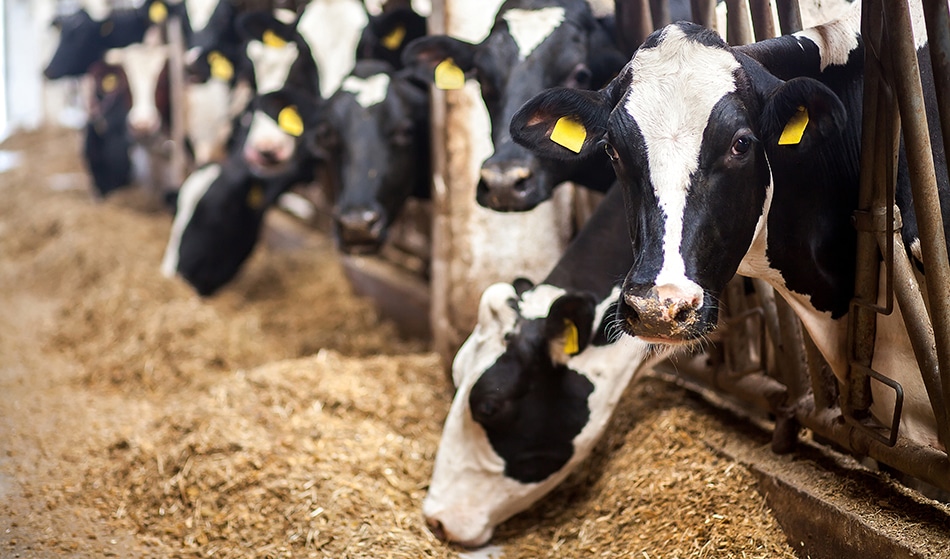USDA Mycotoxin Contamination Testing in Grain Feed
USDA mycotoxin contamination testing is a critical process used to ensure that grain feed products are safe and meet stringent quality standards. Mycotoxins are toxic metabolites produced by certain molds, and their presence can pose significant health risks not only to livestock but also to humans who consume meat or dairy products derived from infected animals.
The testing of grain feed for mycotoxin contamination is governed primarily by the USDA (United States Department of Agriculture). This service ensures that farmers, processors, and distributors are adhering to safe levels of certain mycotoxins as outlined in USDA regulations. The most commonly tested mycotoxins include aflatoxin B1 (AFB1), deoxynivalenol (DON or vomitoxin), zearalenone (ZEN), and fumonisin.
Grain feed contamination by mycotoxins can occur due to various factors such as improper storage, high humidity levels, and temperature fluctuations. These conditions favor the growth of mold spores leading to the production of mycotoxins. Once contaminated, grain feed must be tested for compliance with regulatory limits set forth by the USDA.
Our laboratory uses advanced analytical techniques including Liquid Chromatography Tandem Mass Spectrometry (LC-MS/MS) and Enzyme Linked Immunosorbent Assay (ELISA). These methods allow us to detect even trace amounts of mycotoxins, ensuring accurate results. The testing process involves several steps: sample collection, extraction, clean-up procedures, and finally analysis. Each step is crucial in providing reliable data that can be used for decision-making purposes.
Testing grain feed for mycotoxin contamination helps protect animal health and welfare by preventing the consumption of harmful substances. It also ensures compliance with international standards such as those set out by ISO, ASTM, and others. By adhering to these guidelines, our clients can ensure they are delivering safe products that meet both domestic and export market requirements.
- Reduces the risk of mycotoxin-related illnesses in livestock.
- Ensures compliance with strict USDA regulations.
- Protects animal health and welfare by avoiding contamination.
- Avoids potential recalls or lawsuits due to contaminated products.
In summary, USDA mycotoxin contamination testing is essential for maintaining high standards of quality control in the agricultural sector. It plays a vital role in ensuring that grain feed meets the necessary safety criteria and complies with local regulations. By offering this service, we aim to provide peace of mind to our clients knowing their products are safe and compliant.
Why It Matters
The importance of USDA mycotoxin contamination testing in grain feed cannot be overstated. Mycotoxins can have severe consequences for both animal health and human safety if not properly managed. For animals, exposure to high levels of mycotoxins can lead to reduced feed intake, weight loss, reproductive failure, immune suppression, and even death.
For humans, consuming meat or dairy products derived from infected animals could result in various adverse effects ranging from digestive issues to more serious conditions like liver damage. The presence of certain mycotoxins such as aflatoxin B1 has been linked to cancer in both animals and people. Therefore, it is imperative that grain feed undergoes thorough testing before being marketed or sold.
The USDA sets specific limits on the allowable levels of different types of mycotoxins found in various agricultural products. Compliance with these regulations helps maintain public trust and ensures that consumers have confidence in the safety of their food supply chain. Regular testing also allows for proactive measures to be taken if contamination is detected early, minimizing potential losses and ensuring better overall management practices.
From an economic perspective, preventing outbreaks due to mycotoxin contamination saves businesses time and money by avoiding costly recalls or lawsuits resulting from contaminated products reaching the marketplace. Additionally, maintaining good relationships with regulatory bodies enhances brand reputation among customers who value transparency and quality assurance.
Benefits
- Health Protection: Ensures that grain feed does not contain harmful levels of mycotoxins which can cause health problems in livestock and ultimately affect human health through the food chain.
- Regulatory Compliance: Helps businesses stay within legal limits set by USDA for various types of mycotoxins, avoiding potential penalties or fines associated with non-compliance.
- Economic Stability: Prevents financial losses due to recalls or lawsuits caused by contaminated grain feed entering the market. It also supports long-term business stability and reputation management.
- Risk Mitigation: Early detection through frequent testing allows for timely interventions, reducing the risk of widespread contamination events that could affect large populations of animals.
In conclusion, implementing USDA mycotoxin contamination testing provides multiple benefits across different dimensions including public health, regulatory compliance, economic stability, and overall risk mitigation. These advantages make it an indispensable component in modern agricultural practices aimed at producing safe and reliable grain feed products.
Why Choose This Test
- Accurate Results: Utilizing cutting-edge technology like LC-MS/MS ensures precise detection of even minute quantities of mycotoxins, providing accurate data that can be relied upon for informed decisions.
- Comprehensive Coverage: Tests cover all major categories of mycotoxins relevant to grain feed, ensuring a holistic approach to quality assurance.
- Expertise and Experience: Our team comprises highly skilled professionals with extensive knowledge in agricultural microbiology who can provide valuable insights during the testing process.
- Rapid Turnaround Time: We offer quick turnaround times for test results, enabling swift action to be taken based on the findings. This efficiency is crucial for maintaining operational continuity and responding promptly to any issues that arise.
Selecting our USDA mycotoxin contamination testing service ensures you receive top-tier quality assurance tailored specifically towards your unique needs within the agricultural industry. With comprehensive coverage, accurate results, expert guidance, and rapid response capabilities, we are committed to helping you achieve compliance while protecting both animal health and human safety.





